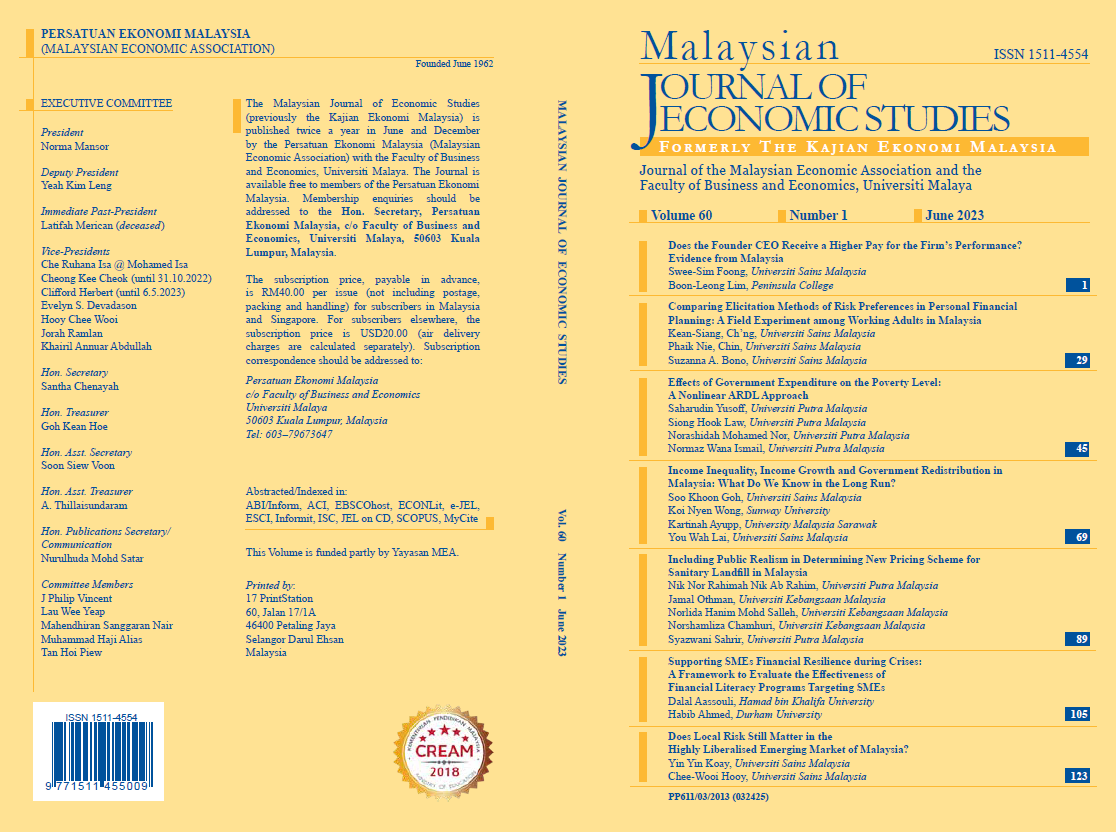Effects of Government Expenditure on the Poverty Level: A Nonlinear ARDL Approach
Keywords:
Poverty, development expenditure, NARDL, MalaysiaAbstract
The argument on the behaviour of government expenditure toward reducing the poverty level is still controversial among economists and policymakers. This study investigates the role of government development expenditure in alleviating poverty in Malaysia. The study employs a nonlinear autoregressive distributed lag (NARDL) model from 1970 to 2019 using annual time series data. The bounds test of the NARDL specification suggests the presence of cointegration among the variables, namely the poverty level, development expenditure, gross domestic product per capita, inflation rate, physical capital and human capital. The empirical findings demonstrate that an increase in development expenditure is an insignificant determinant of poverty, but the reductions in development expenditure significantly eradicate the poverty level in the long run. For robustness checks, the share of development expenditure on gross domestic product is used in the estimation. The findings show that all development expenditure has little to no impact on lowering poverty levels over the long and short runs. The Malaysian government should therefore consider how crucial it is to allocate public funds effectively and make sure that the emphasis on spreading development gains across all economic sectors must have an influence on the poverty level.

